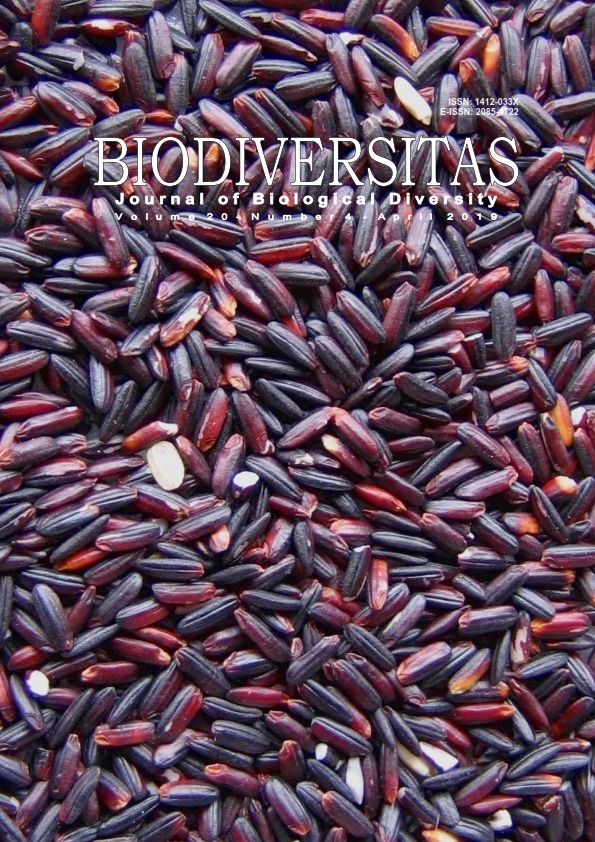Vegetation analysis of non-tidal swampland in South Sumatra, Indonesia and its carrying capacity for Pampangan buffalo pasture
##plugins.themes.bootstrap3.article.main##
Abstract
Abstract. Muhakka, Suwignyo RA, Budianta D, Yakup. 2019. Vegetation analysis of non-tidal swampland in South Sumatra, Indonesia and its carrying capacity for Pampangan buffalo pasture. Biodiversitas 20: 1077-1086. In Indonesia, non-tidal swampland area is 13.27 million ha, only 4 million ha has been developed with details of 2.6 million ha that managed by the public and the private sector and 1.3 million ha with government assistance. This study aims to analyze vegetation structure of non-tidal swampland in Pulau Layang Village, Ogan Komering Ilir District, South Sumatra, Indonesia and Rambutan Village, Banyuasin District, South Sumatra, Indonesia and to examine its carrying capacity for Pampangan buffalo pasture. Methods used were by the combination of direct observation, survey using plot sampling with total 50 observation plots, and measurements to determine forage production using Halls method. The results show that there 19 forage species were in two studied areas which are potential as Pampangan buffalo feed. Species with the highest Important Value Index were Purun tikus (Eleocharis .dulcis) with 89.71% and Kumpai padi (Oryza. rufipogon) with 54.08%. The production of fresh forage and dry matter in the wet season in Pulau Layang was 6.90 tons ha-1 year-1 and 1.27 tons ha-1 year-1, respectively, whereas in Rambutan they were 3.68 tons ha-1 year-1 and 0.91 tons ha-1 year-1, respectively. The production of fresh forage and dry matter in the dry season in Pulau Layang was 4.86 tons ha-1 year-1 and 0.99 tons ha-1 year-1, respectively, while in Rambutan they were 2.52 tons ha-1 year-1 and 0,71 tons ha-1 year-1, respectively. The pasture carrying capacity in Pulau Layang in the wet season was 3.66 AU (Animal Unit) ha-1 year-1 and in the dry season, it was 2.85 AU ha-1 year-1, while in Rambutan Village it was 2.61 AU ha-1 year-1 and 2.04 AU ha-1 year-1, respectively. There were six species of forage with high production, namely Kumpai tembaga (Hymenachne acutigluma) Kumpai padi (Oryza rupifogon), Kumpai minyak (Hymenachne amplexicaulis), Are bolong (Polygonum barbatum L), Bento rayap (Leersia hexandra) and Purun tikus (Eleocharis dulcis). It is estimated that there still can be added buffalo cattle as much as 0.31 AU ha-1 year-1 in Pulau Layang Village so 155 buffaloes and 0.59 AU ha-1 year-1 in Rambutan Village.709 buffaloes
